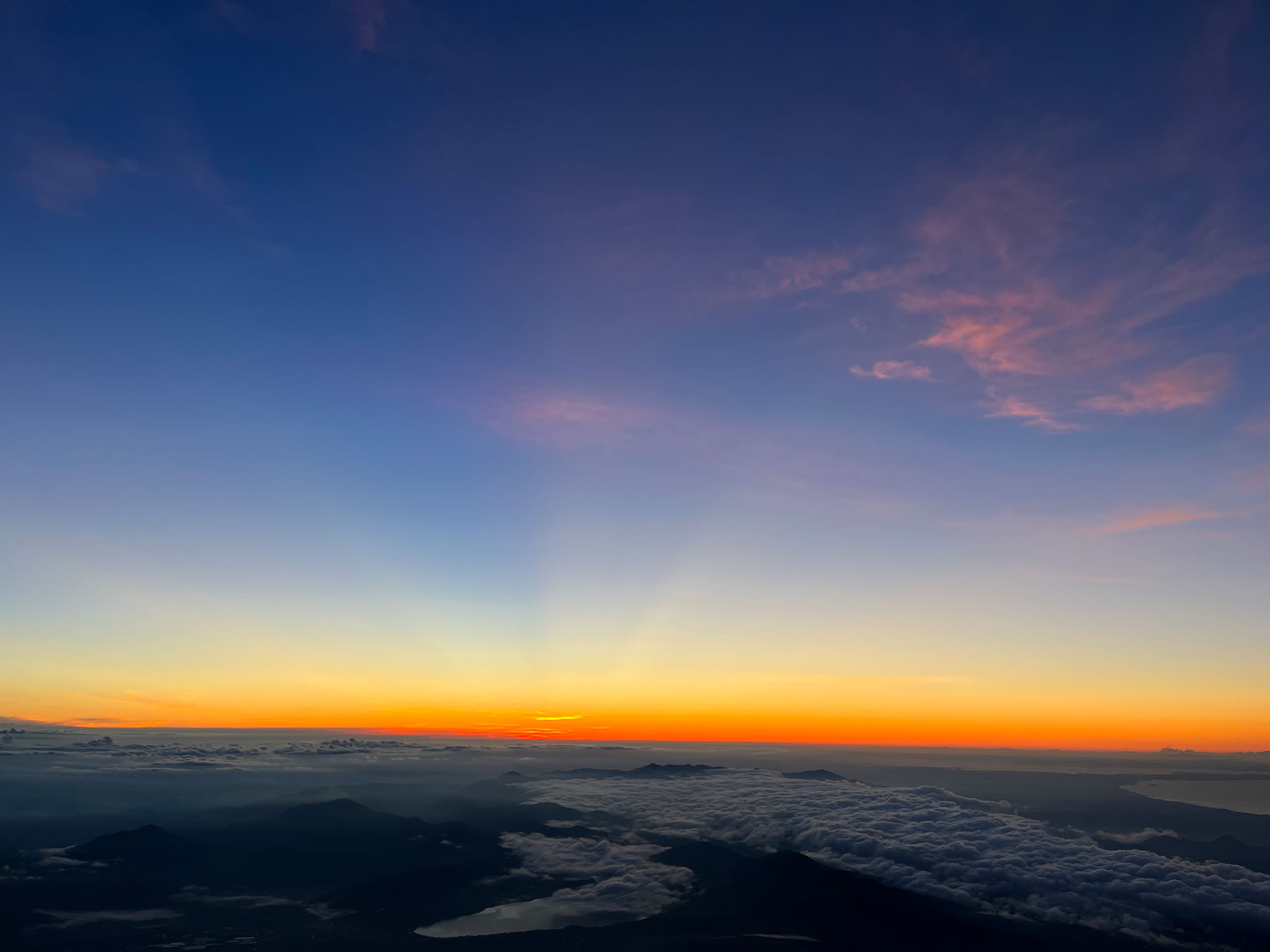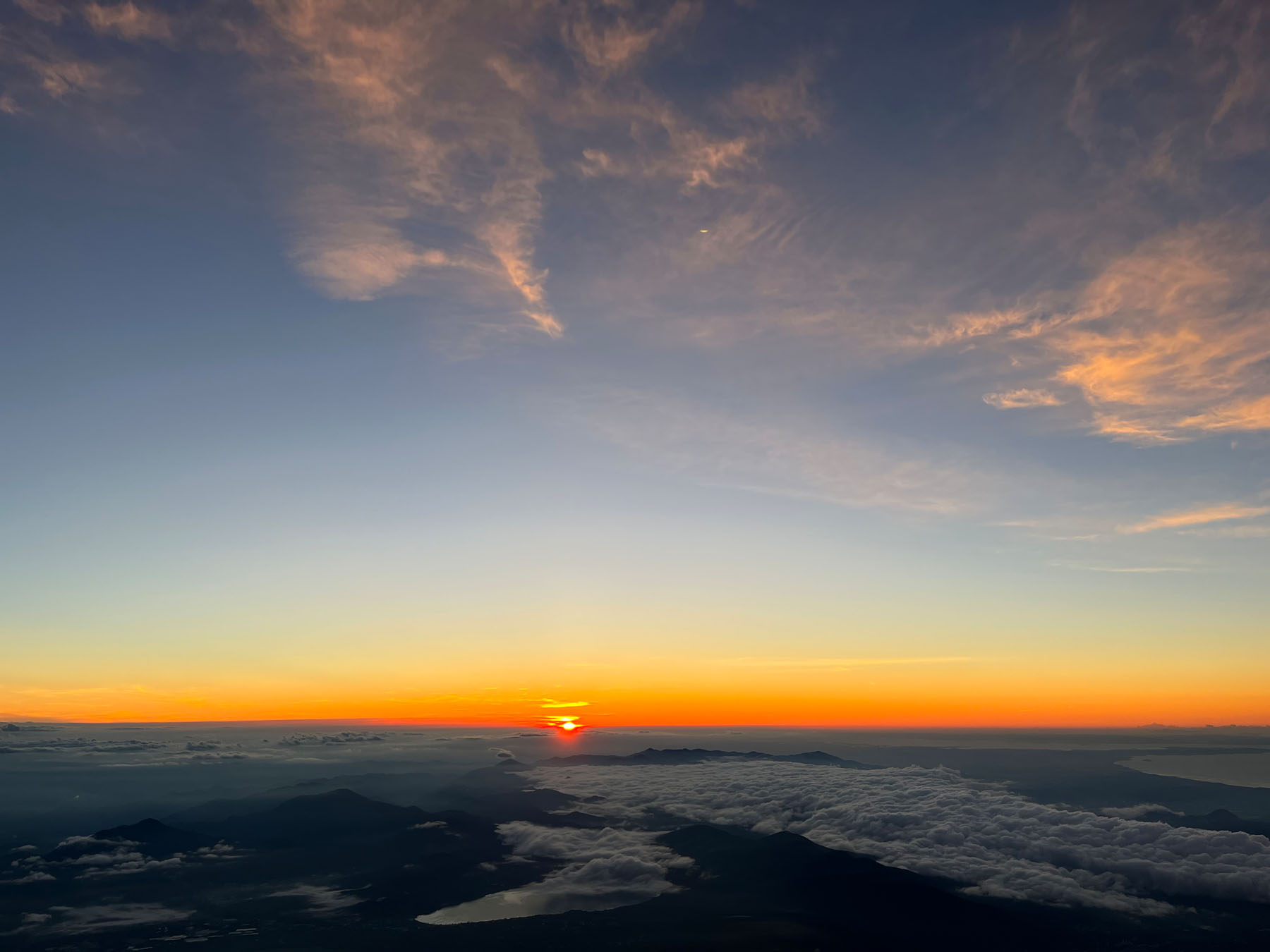Japan’s Tallest Peak
A journey to the top of Mount Fuji

Though the July afternoon sun was shining, the altitude kept the air crisp and chilly. The wind whipped red volcanic dust into clouds that left behind a cloak of red on everything and everyone. The view below was a stark contrast to the barren and cold top, a stretched patchwork of vibrant greens seemed to go on for ages. Our muscles ached and our breath was short until we came to a stone torii gate, a marker to the sacred mountain peak of Mount Fuji.
Rising at 3,776 meters (12,388 feet), Mount Fuji is Japan’s tallest mountain. Its peak is not jagged like Everest or wide like Kilimanjaro. Instead, its gentle slopes form a nearly symmetrical cone, as if someone pinched the flat earth between a thumb and finger. From the towns that surround it, the mountain dominates the horizon, standing alone without a range or accompanying twin peak. Its simplicity is commanding as it looms over life below.
From spring cherry blossoms to fall maple leaves, visitors come to see this looming mountain view from hot springs and inns all year round. The hiking season, though, is less than three months out of the year, starting when the ice melts around July until mid to late September. Even in such a short time frame, the mountain receives well over 300,000 hikers annually.
There are four main trails these hikers can choose to take up the mountain, but the Yoshida Trail is the most popular with several stations along the way that offer huts for overnight stays. Since it is a volcano, the trail is rough and dusty and the red andesite rock makes it feel like it’s some slope on Mars.
The hike itself is not particularly difficult for an avid hiker, rather its the speed at which many choose to take on the altitude climb that offers the biggest challenge. Known as “Bullet Hikers,” many tourists keen on fitting in the iconic climb into their short but packed itinerary start the journey at night and make their way to the top for sunrise before heading back down before noon. While doable, it’s not recommended since mixed with jet lag or lack of experience, the risk of altitude sickness is much higher. These days, many locals even protest this kind of hiking, citing the wear and tear it has on the trail with so many people rushing through.
Even with the warnings against it, looking out from the hut in the evening, the trail of headlamps is tightly packed and nonstop throughout the night. The reason so many opt for hiking through dusk to dawn instead of from dawn to dusk is because of the sun. More specifically, the sunrise. While the sunset is wildly beautiful, the sunrise is unbeatable. The sun rises as a large red disk, sending vibrant oranges and streaks of blue across the sky. Though it rises around 4:30 a.m., no one inside the huts or on the trails sleep through it.

Photo Credit: Michael Dale

Photo Credit: Michael Dale






